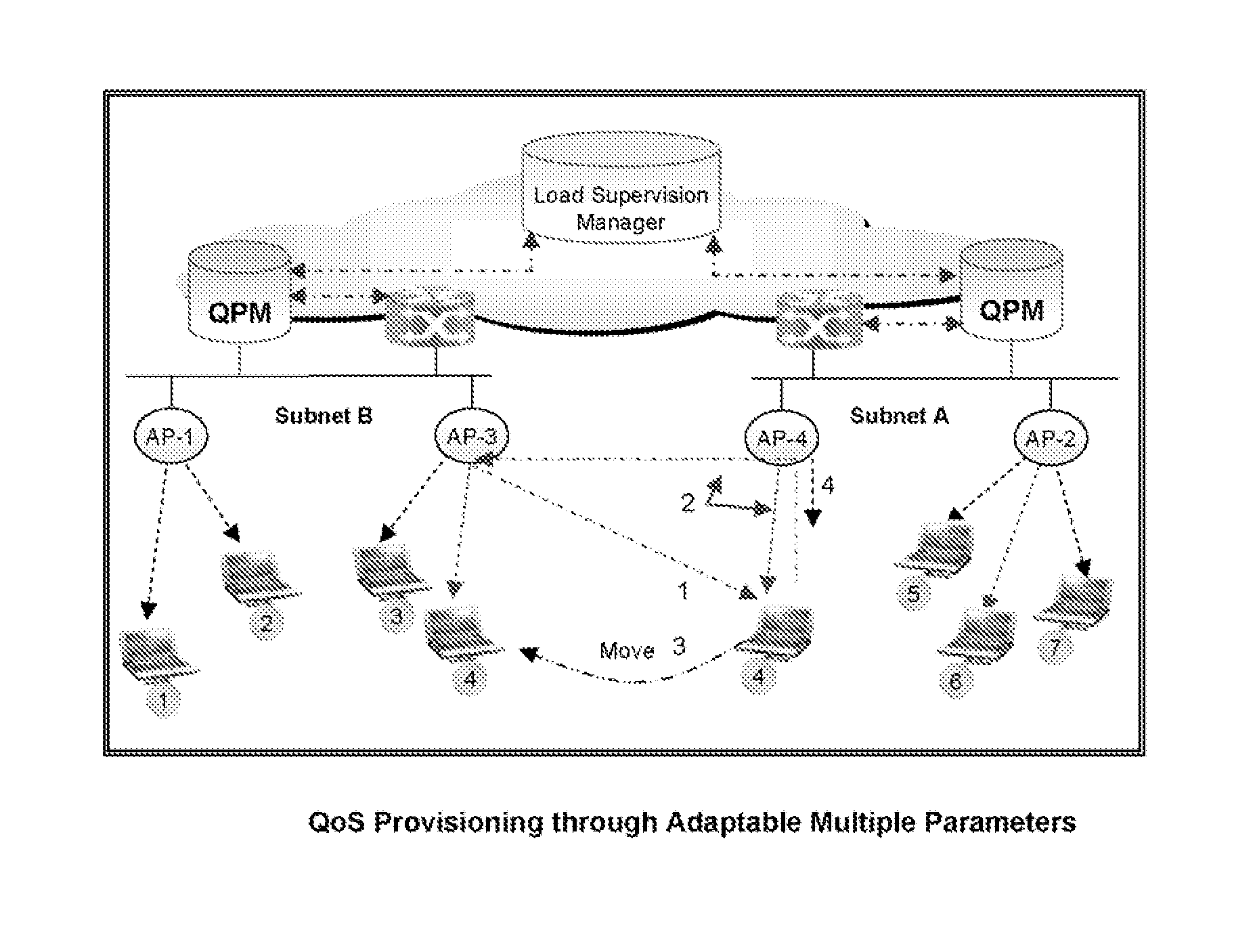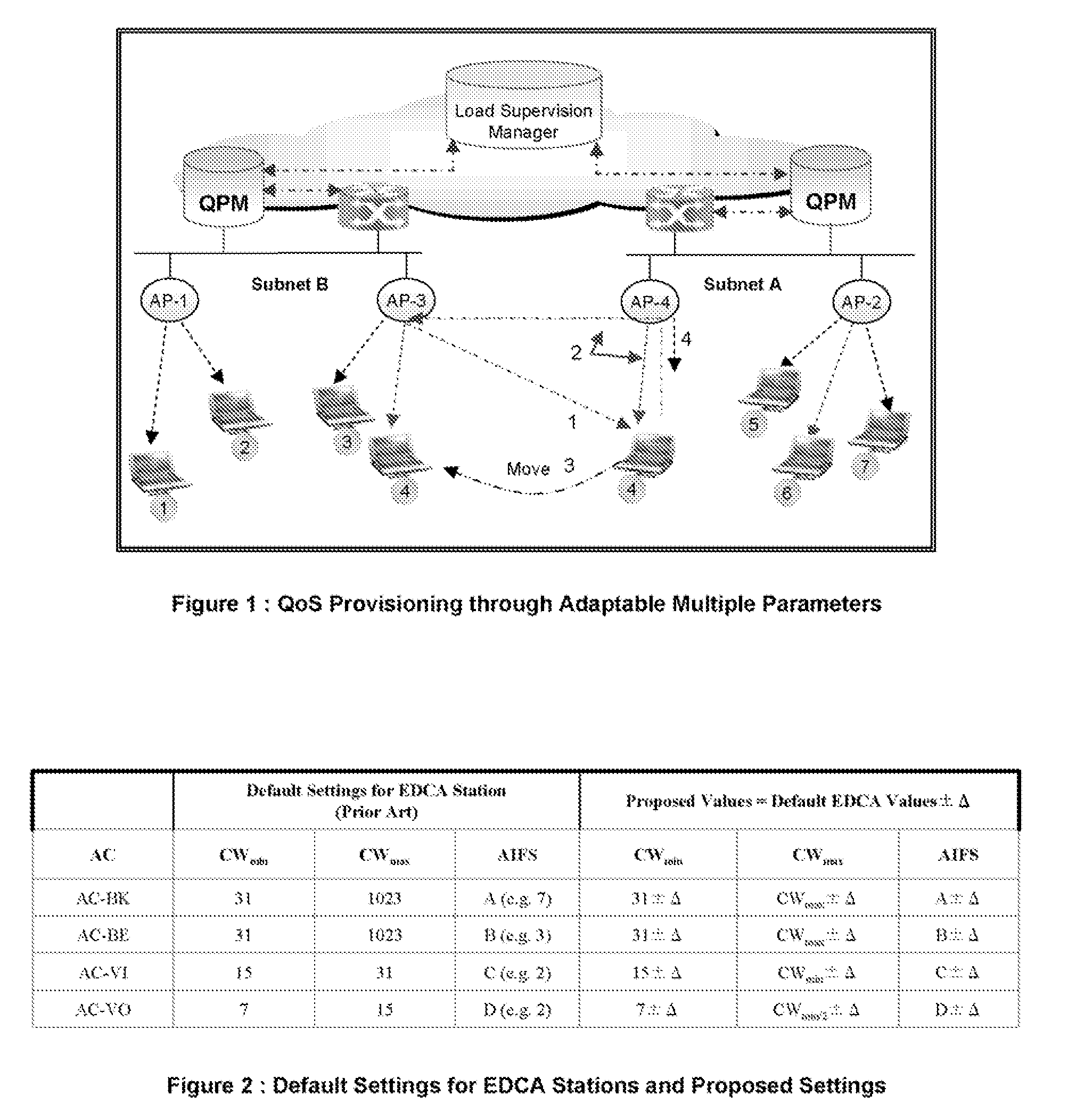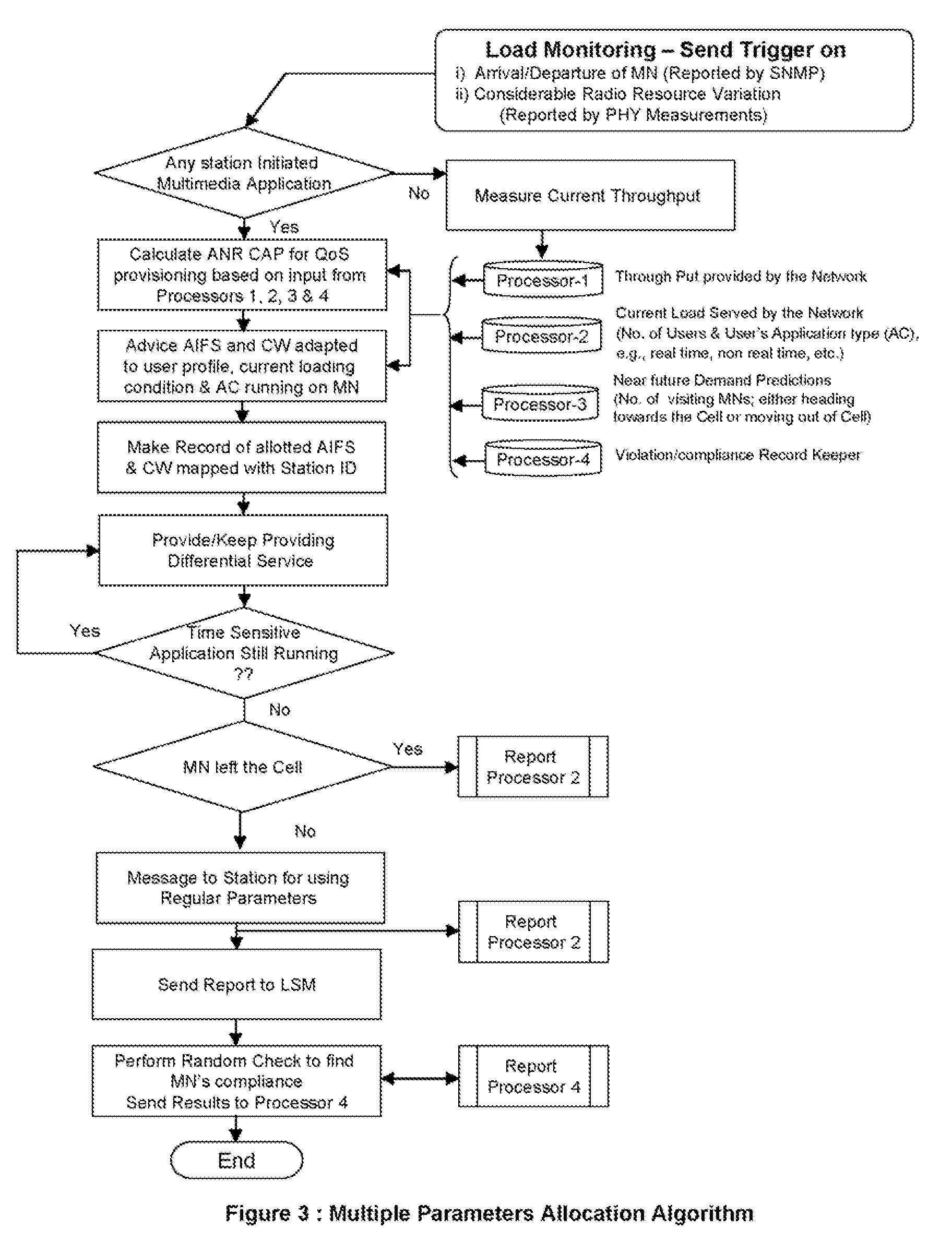Quality of service provisioning through adaptable and network regulated channel access parameters
a channel access parameter and adaptable technology, applied in the field of wireless networking, can solve the problems of introducing several performance problems, routing protocols not being able to properly deliver packets, and wireless parts of the network presenting bottlenecks in bandwidth hungry delivery
- Summary
- Abstract
- Description
- Claims
- Application Information
AI Technical Summary
Benefits of technology
Problems solved by technology
Method used
Image
Examples
Embodiment Construction
[0054]While the present invention may be embodied in many different forms, a number of illustrative embodiments are described herein with the understanding that the present disclosure is to be considered as providing examples of the principles of the various inventions described herein and that such examples are not intended to limit the invention to preferred embodiments described herein and / or illustrated herein.
[0055]The present invention takes a completely different approach to address the above noted issues. Rather than picking up differentiated CAP, by the MNs, the network advises the MNs to use newly baked values duly tailored with their requirements as well as prevailing load conditions. Moreover instead of fixing the default set of values for CAP for each access category, they are flexible and the network fine tunes them dynamically according to the prevailing load situations. Thus, the CAP values are re-examined each time the network loading condition varies.
[0056]Accordin...
PUM
 Login to View More
Login to View More Abstract
Description
Claims
Application Information
 Login to View More
Login to View More - R&D
- Intellectual Property
- Life Sciences
- Materials
- Tech Scout
- Unparalleled Data Quality
- Higher Quality Content
- 60% Fewer Hallucinations
Browse by: Latest US Patents, China's latest patents, Technical Efficacy Thesaurus, Application Domain, Technology Topic, Popular Technical Reports.
© 2025 PatSnap. All rights reserved.Legal|Privacy policy|Modern Slavery Act Transparency Statement|Sitemap|About US| Contact US: help@patsnap.com



